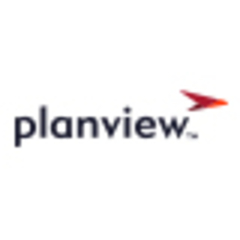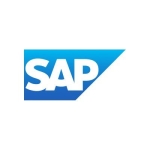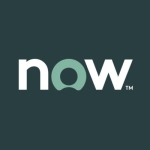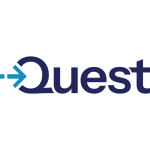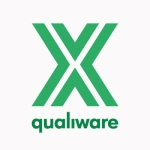What is our primary use case?
We're a global company. The biggest thing for us was to find a digital solution that enabled our global company to see everything across the globe. We have a lot of different groups at this point going up on it. We have manufacturing facilities, quality, human resources, IT, etc. The whole gamut is using Enterprise One, then beneath that we have certain groups who are using Projectplace and we will be implementing LeanKit as well.
How has it helped my organization?
We can see all the different initiatives that folks are working on and have been able to hook groups up, to say, "Let's not redo that. We're already working on that." Instead of having all this duplicity, we have one streamlined group working on it together.
The solution’s collaborative work management has affected our operations. We were in a place of using a billion emails, Excel templates, etc., so project documentation would get lost and no one knew what was going on. From a time savings perspective, the fact that we have Projectplace specifically, with everything in one place and we are part of a workspace where we can go and see what's going on, that has had a major impact in the way that we work.
It helps make sure stuff is aligned to strategy.
The biggest impact has been getting all these global groups into one space so we can even have intelligent conversations about what are we trying to accomplish. Before, it was just different regions doing whatever. Now, we're all talking the same language, and that's good.
What is most valuable?
It gives us the visibility and ability to see exactly what is happening for our organization. Even though we're a global company, we had our Asia Pacific and EMEA groups doing whatever they did. Then, in North America, there was no visibility across the board. So, there was a lot of duplicity and duplication in different projects, initiatives, etc. So, this solution is really giving us the ability to say, "Wait a minute. You're about to initiate this. We've got another group who is already doing that. Why don't we link you guys up together to figure that out?"
This has been a huge win because of the collaboration piece. Unfortunately, our organization has two different tenants of Microsoft Office, which means we can't communicate on teams, as an example. So, we have groups utilize Projectplace in place of that. Therefore, we can all talk, understand what's happening, and communicate that way, which has been amazing.
The colloboration between Enterprise One and Projectplace has been good because we didn't have a standard place to do this type of collaboration. There are a billion emails with Excel sheets, etc., and the way that we've utilized it is from the PM up. They are in Enterprise One, and they build their plans, doing whatever provides good reporting for our executive level leadership. Then, at the team level, there is Projectplace. The fact that we can integrate our Enterprise One down into Projectplace or sync the spaces has been really helpful.
What needs improvement?
I don't find the solution flexible. We have almost like a third-party group who has to do a lot of our configurations. It's a bit painful for us anytime we want to make a change. The other issue is that we have different groups all in the same instance. So, if one group wants to make a change, it impacts everyone. Then, we all have to come together, to say, "Yes, we approve this change, or no, we do not." Thus, it has not been as flexible for us. However, I don't know how much of this is a result of the way that we set up the configuration versus the true flexibility within the tool.
For how long have I used the solution?
As an organization, we implemented it four years ago. Recently, they created another group, which I just joined. Hence, why I've only been using it for about two months. We're in the process right now of taking out what was put in because they didn't put it in well. We're redesigning our whole Enterprise One configuration.
What do I think about the stability of the solution?
I've only been in it for a couple months, so I haven't really noticed any stability type issues.
Some of it's a bit slow. We are starting to get some Power BI dashboards built into it. Sometimes, we have to stay updated or refresh them, which I have noticed that in comparison to other BI solutions I've used, there seems to be a bit of a lag. However, I don't know how much of this is because the way it's hosted or if it's a true issue.
What do I think about the scalability of the solution?
Because we're in this process, I know that our organization right now doesn't have a very positive view of Planview's scalability because of the way it was implemented initially. So, we're in this whole process of ripping the whole thing out, reconfiguring it, and putting it back.
How are customer service and technical support?
So far, the support has been really good. We have a third-party through whom we submit most of our ticket issues.
We got to sit down with the technical support face to face to sort of crafting what our solution would look like. I thought that part went really well. They seemed to have a really good understanding of what we are trying to accomplish and what our prior challenges were. So, I feel really confident that the solution they're proposing is going to meet the basic needs of where we need to go.
How was the initial setup?
The initial part of the problem was when they implemented the original Enterprise One, they implemented the most complex version of it. Our maturity level is that we can't get people to follow basic Projectplace. So, we definitely see the roadmap for it to do transform our company's strategy, but we're just not there.
What about the implementation team?
We're going to be doing a fast track deployment with Planview. We have our first meeting to talk timeline on Monday following the Horizons conference.
Which other solutions did I evaluate?
We went to a roadmap meeting with this very specific thought in mind that if we couldn't figure out how to do this in the way we needed to, then we were prepared to walk away from it. But, we did not have another vendor selected because we recognize and can see the power of the tool. It's just figuring out how do we best use it for our offices.
What other advice do I have?
I would rate the product an eight (out of 10). I've seen enough use cases from other organizations who have really transformed the way that they work. It's just clear that my organization is just not there. I have a lot of hope that this product will be what we need it to be once we get this initial configurations figured out.
The biggest advice is to make sure you've done a maturity assessment on your organization. Whatever you initially implement, you're implementing at the lowest common denominator. For us, they tried to go immediately after things like capacity planning and resource management, but our maturity isn't fast. As a result, our users ended up being very frustrated. The other piece would be, when you implement it, think about the users who are doing the work. We implemented based on what we thought our executives would want to see, and that is backwards. Those are the two biggest things. The tool is so big and powerful that it is very easy to say, "I want to do all these amazing things." But, if your business maturity isn't there, you're going to fall and that will hurt.
Which deployment model are you using for this solution?
Public Cloud
Disclosure: My company does not have a business relationship with this vendor other than being a customer.

